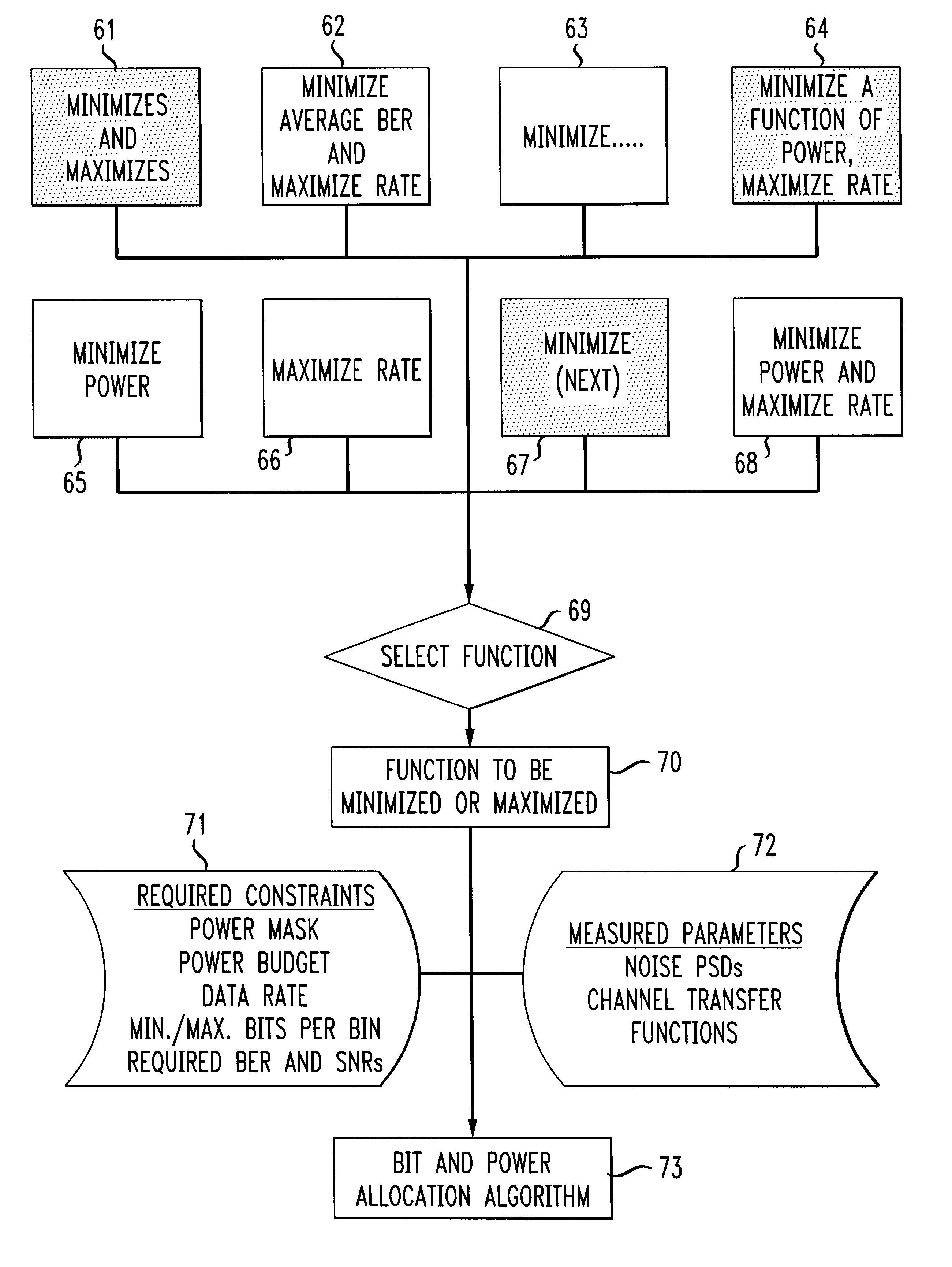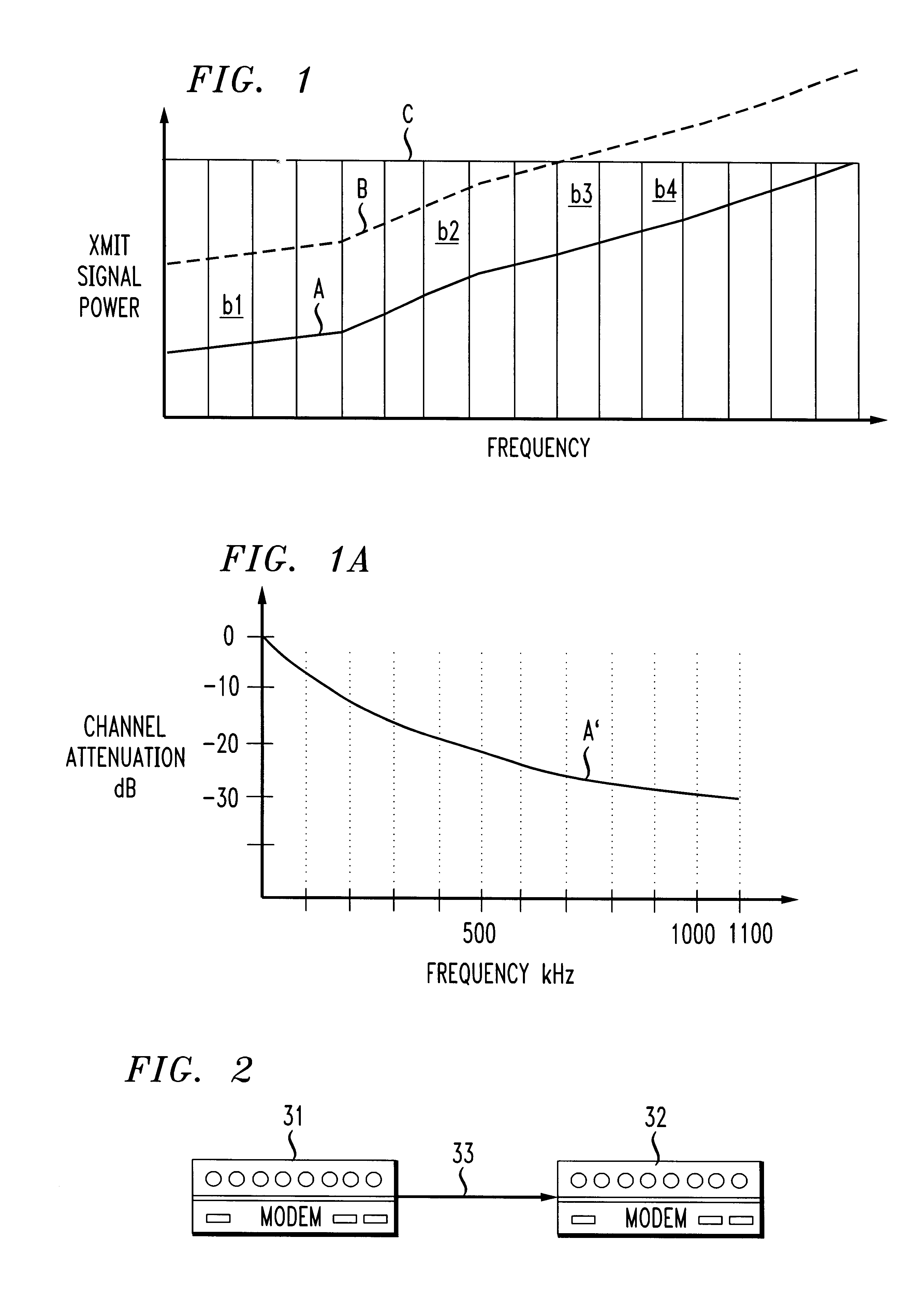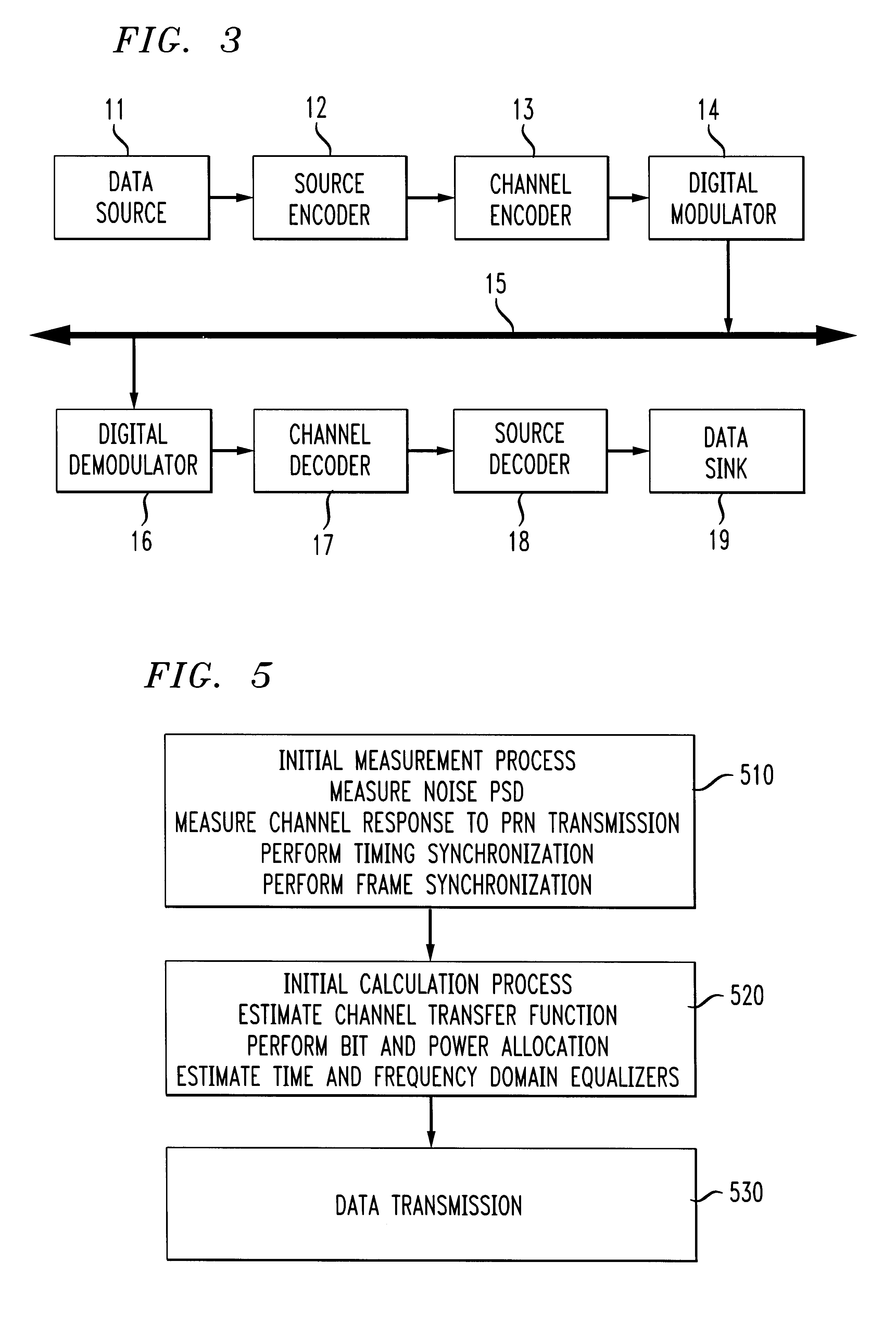Method and apparatus for minimizing near end cross talk due to discrete multi-tone transmission in cable binders
a multi-tone transmission and cable binder technology, applied in the field of minimizing near-end cross-talk due to discrete multi-tone transmission in cable binders, can solve the problems of bit-allocation problem, not all cases are power limited, and the method may not go as far as possible in exploiting the available power imposed, etc., to achieve the effect of minimizing the near-end cross-talk
- Summary
- Abstract
- Description
- Claims
- Application Information
AI Technical Summary
Problems solved by technology
Method used
Image
Examples
Embodiment Construction
Referring to FIGS. 1, 1A and 2, a transmitting modem 31 is connected to a receiving modem 32 by a cable 33 having one twisted pair of conductors. In long loop systems where cable 33 is of length of the order 18,000 feet or more, high signal attenuation at higher frequencies (greater than 500 kHz) is observed. This characteristic of a typical cable 33 is represented graphically by curve A' in FIG. 1A.
For convenience of description, the details of digital modulator 14 and digital demodulator 16 are described in terms of a QAM multitone system, although the invention is applicable to other kinds of multi-carrier and multi-channel signaling as will be understood by those skilled in the art in light of the teachings disclosed herein.
Referring now also to FIG. 3, Modems 31 and 32 contain a source encoder 12, a channel encoder 13, a digital modulator 14, to accept and transmit data on channel 15 (typically, a twisted pair) from a data source 11. Channel 15 may comprise a hybrid fiber / twist...
PUM
 Login to View More
Login to View More Abstract
Description
Claims
Application Information
 Login to View More
Login to View More - R&D
- Intellectual Property
- Life Sciences
- Materials
- Tech Scout
- Unparalleled Data Quality
- Higher Quality Content
- 60% Fewer Hallucinations
Browse by: Latest US Patents, China's latest patents, Technical Efficacy Thesaurus, Application Domain, Technology Topic, Popular Technical Reports.
© 2025 PatSnap. All rights reserved.Legal|Privacy policy|Modern Slavery Act Transparency Statement|Sitemap|About US| Contact US: help@patsnap.com



